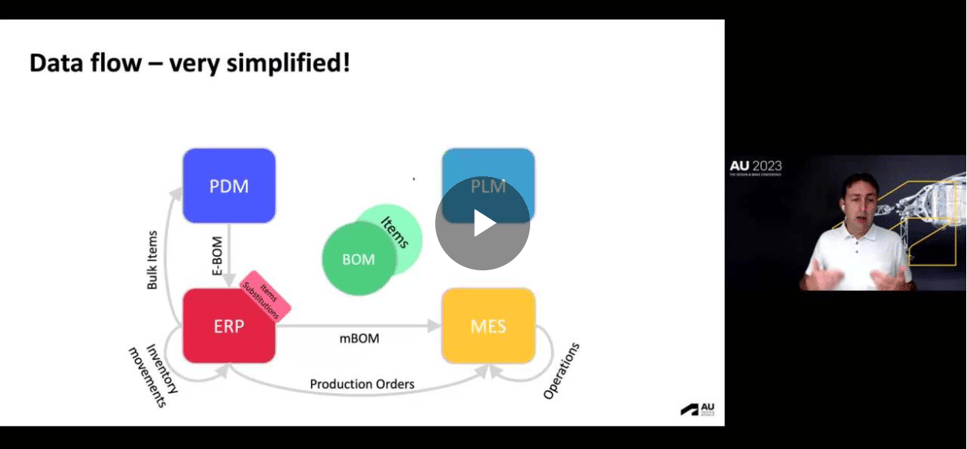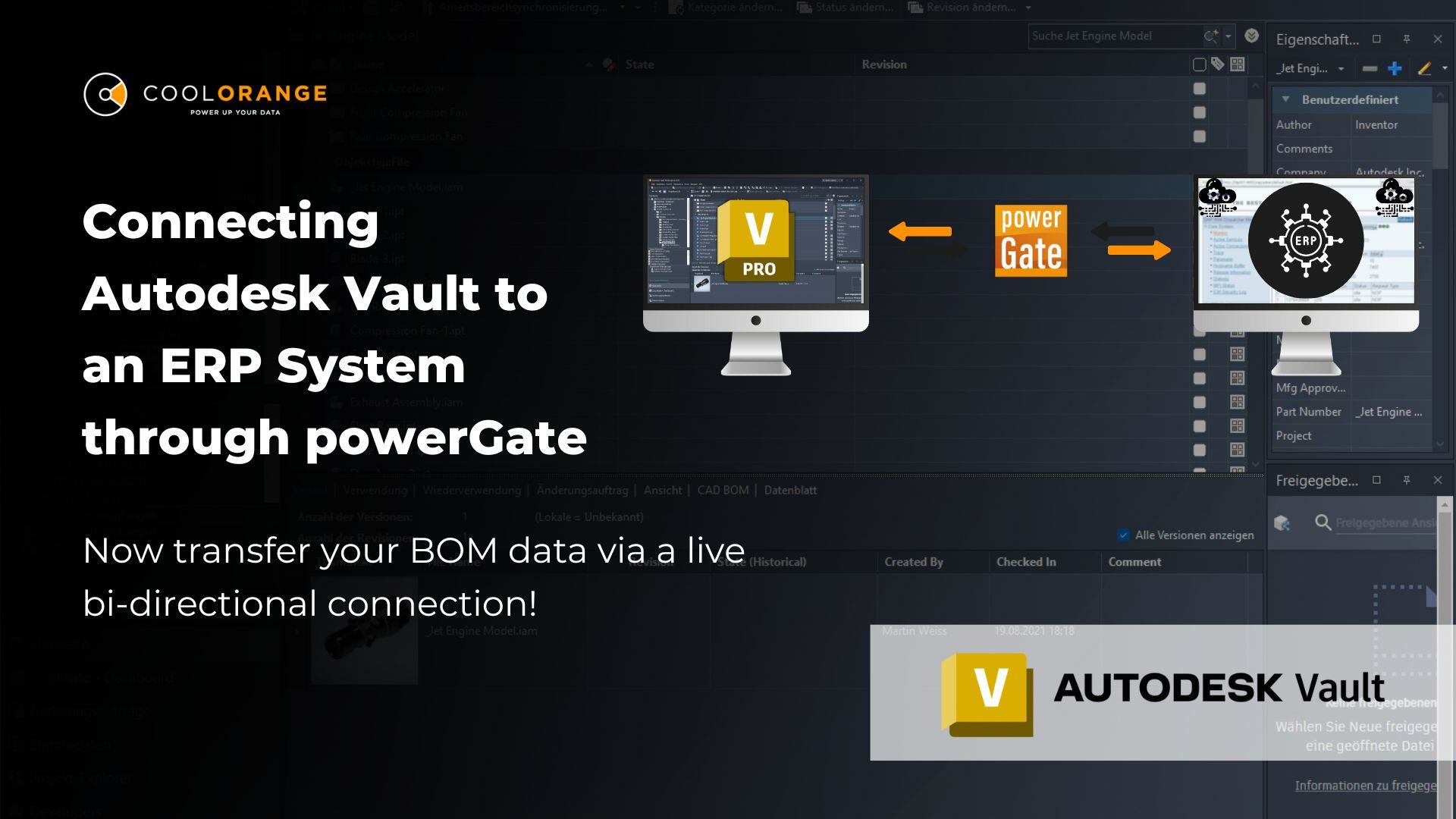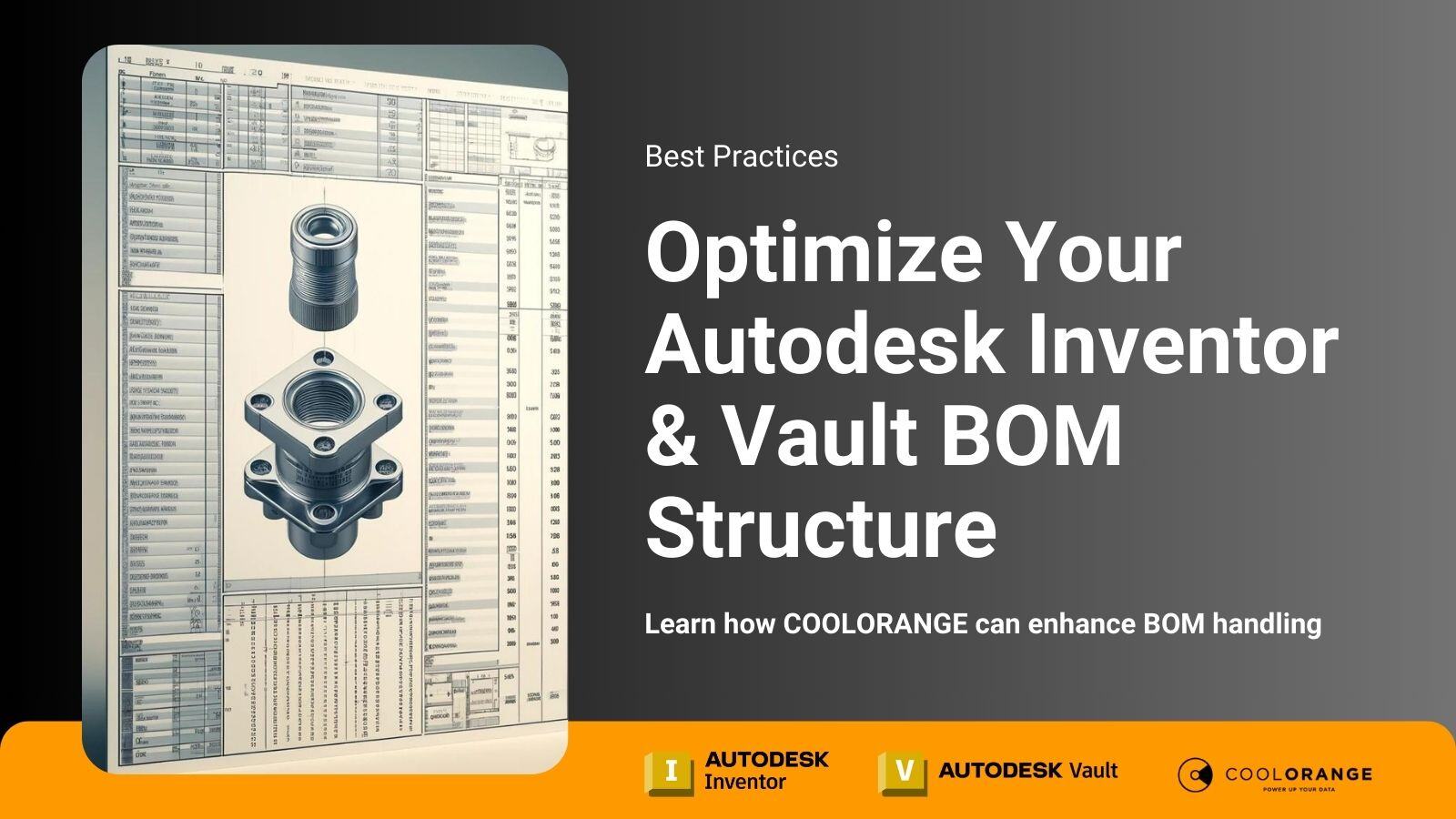Vault best practices
Empowering Manufacturing Excellence: The Synergy of BOM Transformation and Real-time Connectivity with powerGate
The evolution of the Bill of Materials (BOM) across various domains, including Product Data Management (PDM), Product Lifecycle Management (PLM), Enterprise Resource Planning (ERP), and Manufacturing Execution Systems (MES), plays a crucial role in the manufacturing industries. In this blog, we shall briefly delve into the intricate stages that the BOM goes through during product development and manufacturing.
BOM's Expedition Across PDM, PLM, ERP, and MES
The inception of the BOM occurs within the PDM system, where meticulous structuring and organization characterize its formative phase. Transitioning to PLM, the emphasis shifts towards managing and evolving the product throughout its lifecycle. Integration with business processes for resource planning and management takes place in the ERP system. Finally, in MES, the BOM assumes a crucial role in executing and monitoring manufacturing processes on the shop floor.
Challenges in BOM Transformation
The journey of transforming a BOM across these diverse systems is not without its challenges. Some of the challenges include:
-
Dealing with Complexity: The BOM transformation process involves intricate tasks like managing indentation, operations, routings, and phantom elements. These elements require precise handling to ensure accuracy and functionality in the manufacturing process.
-
ERP System Selection: The choice of an Enterprise Resource Planning (ERP) system significantly impacts the efficiency and effectiveness of BOM management and transformation. Selecting the right ERP system is crucial as it directly influences the adaptability and scalability of the BOM to meet diverse manufacturing needs.
Detailed Transformation Process: The transformation from eBOM to mBOM involves several detailed steps:
-
Adjusting the BOM: This initial step focuses on aligning the BOM with manufacturing requirements. It includes adding or removing assembly layers to match the production process.
-
Adding Operations and Routings: Operations and routings are integrated into the BOM to outline the manufacturing process flow and sequence.
-
Customizing the BOM: This involves tailoring the BOM to include all necessary components, ensuring that it comprehensively represents the product to be manufactured.
-
Detailing for Manufacturing Needs: The BOM is detailed to adapt quantity and characteristics such as color, size, and material type, to suit specific manufacturing needs.
-
Considering Hierarchies and Routings: The process takes into account the hierarchical structure of components and the routing of materials through the production process.
-
Managing Consumables and Batch Sizes: The BOM must reflect the consumption of materials and the size of production batches to facilitate efficient resource planning.
-
Ensuring Manufacturability: The final BOM is scrutinized for manufacturability, ensuring that the design is feasible for production with the available resources and technology.
This meticulous process also takes into account the hierarchical structure of components, the flow of materials through the production process, the consumption of materials and the size of production batches, the specific operations involved, and the feasibility of manufacturing. All of these considerations ensure that the BOM is comprehensive and perfectly suited for the manufacturing process.
Simplified Data Flow
During this transformation process, the data flows seamlessly, encompassing vital elements such as eBOM, inventory movements, operations, documentation, change orders, production orders, and ultimately, the transition to mBOM. This meticulous procedure guarantees that all modifications and requirements harmoniously integrate into the BOM as it navigates through various systems.
Benefits of a Transformed and Connected BOM
The metamorphosed and interconnected BOM yields an array of advantages:
-
Efficiency and Speed: Streamlined processes and optimized revisions catapult the journey from design to production, reducing lead time and increasing efficiency.
-
Competitive Edge: Accelerated time-to-market and elevated customer satisfaction give businesses a competitive advantage in the market.
-
Flexibility and Responsiveness: Agile adaptability to change requests and real-time project status monitoring enable businesses to quickly respond to evolving market needs.
-
Cost-effectiveness: Enhanced planning and identification of inefficiencies result in reduced inventory and waste, leading to substantial cost savings.
-
Collaboration and Traceability: Enhanced collaboration and complete traceability of changes ensure seamless communication and transparency throughout the product development and manufacturing process.
-
Accuracy and Quality: Precise data management minimizes errors and ensures exceptional quality, elevating the overall product standards.
powerGate is a solution that plays a significant role in facilitating and enhancing this BOM transformation process.
Here's how powerGate is relevant to the discussed content:
-
Seamless Connectivity:
-
Implicit Inclusion: The article mentions the journey of BOM through different systems. powerGate can be seen as an implicit enabler, ensuring seamless connectivity between these systems for the smooth transition of BOM data.
-
-
Real-time Integration:
-
Enhanced Connectivity: The article emphasizes the importance of real-time connectivity for efficient manufacturing processes. powerGate, being a data integration tool, provides real-time integration capabilities between Autodesk Vault and ERP, ensuring data consistency and accuracy.
-
-
BOM Transformation:
-
Data Transformation: While the article discusses the challenges and steps involved in BOM transformation, powerGate could be the tool that automates and streamlines this transformation process, ensuring that the BOM data is accurately represented across different stages of product development.
-
-
Efficiency and Collaboration:
-
Enhanced Efficiency: The benefits outlined in the article, such as efficiency, flexibility, and collaboration, align with the goals of powerGate. By seamlessly connecting Autodesk Vault and ERP, powerGate contributes to reduced lead times, improved time-to-market, and enhanced collaboration.
-
-
Data Flow and Traceability:
-
Data Management: The simplified data flow discussed in the article resonates with powerGate's role in managing data flow between different systems. The tool likely ensures that changes and requirements are tracked and implemented seamlessly, contributing to comprehensive traceability.
-
-
Cost Savings and Quality:
-
Optimized Processes: The cost savings and quality improvements highlighted in the benefits align with powerGate's potential to optimize processes, reduce inefficiencies, and enhance data accuracy, leading to better cost control and improved product quality.
-
In conclusion, the transformation from eBOM to mBOM, when facilitated by powerGate, can significantly elevate manufacturing processes. Understanding the complexities of this transformation and leveraging the capabilities of powerGate is key to achieving operational excellence and gaining a competitive edge in the market.
Check out our AU'2023 class by
Marco Mirandola, CVO @coolOrange
eBOM to mBOM: BOM Transformation Across PDM, PLM, ERP, and MES




